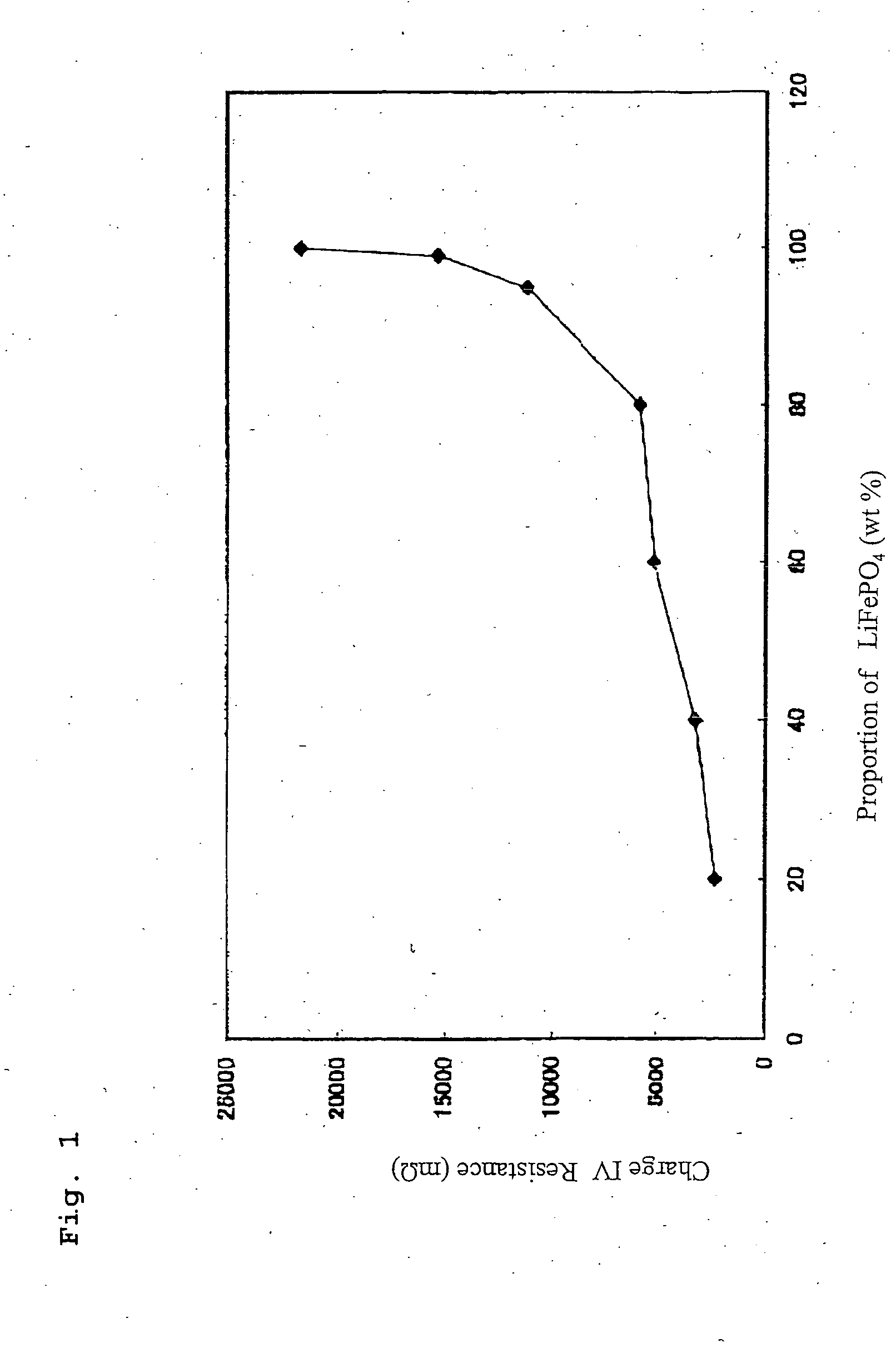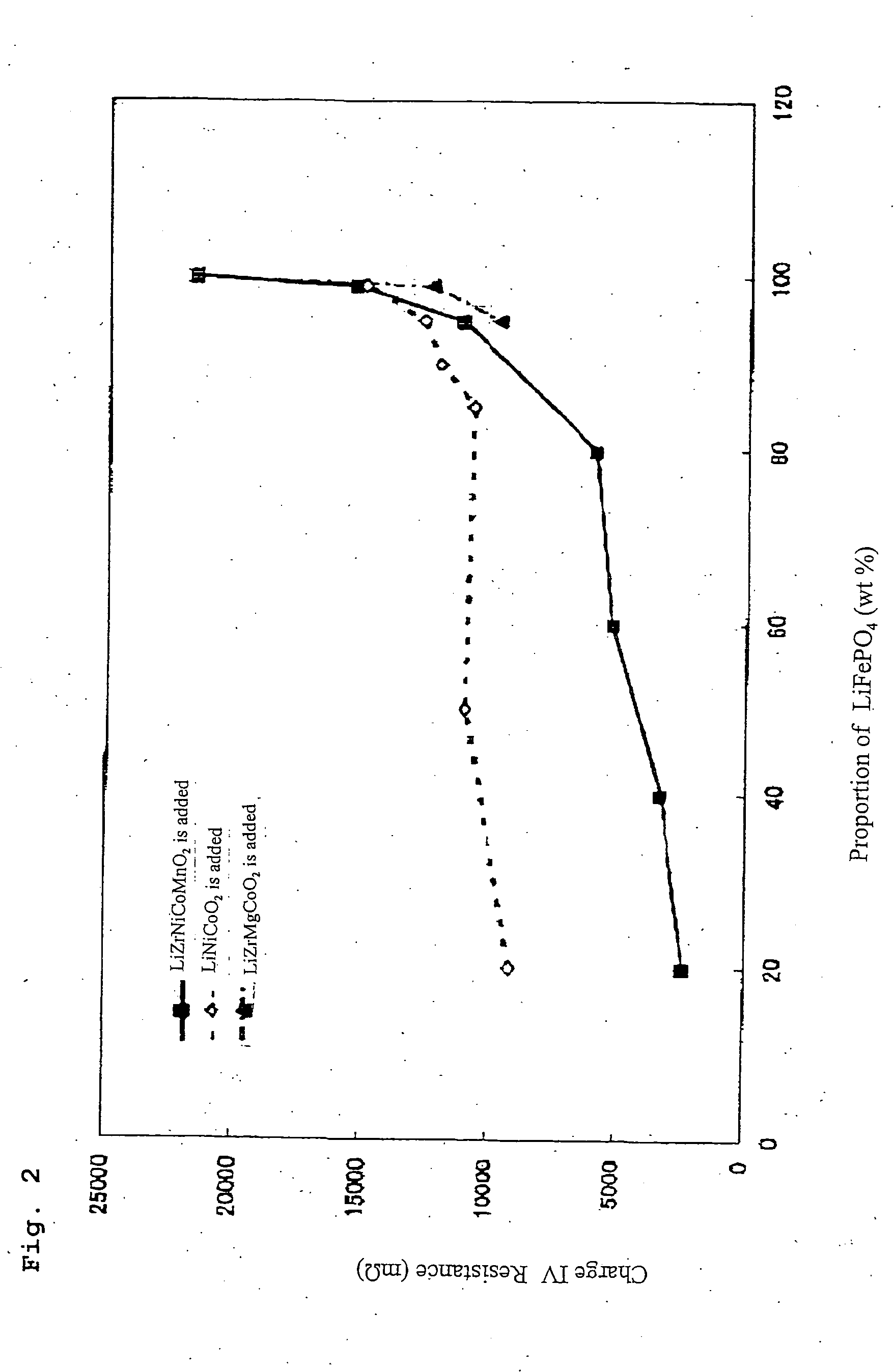Non-aqueous electrolyte secondary battery
a secondary battery and electrolyte technology, applied in the field of non-aqueous electrolyte secondary batteries, can solve the problems of reduced battery voltage, insufficient and achieve good power regeneration performance, improve poor battery power regeneration performance, and high electrical resistance
- Summary
- Abstract
- Description
- Claims
- Application Information
AI Technical Summary
Benefits of technology
Problems solved by technology
Method used
Image
Examples
example 1
Preparation of Positive Electrode Active Material
[0029] An olivine-type lithium phosphate (LiFePO4) was prepared in the following manner. First, starting materials, iron phosphate octahydrate (Fe3(PO4)2.8H2O) and lithium phosphate (Li3PO4), were mixed at a mole ratio of 1:1 and kneaded with the use of a planetary ball mill in the following manner. The mixture was put into a 10 cm-diameter stainless steel pots, along with 1 cm-diameter stainless steel balls, and the planetary ball mill was operated under the following conditions: radius of revolution: 30 cm, revolution speed: 150 rpm, rotation speed: 150 rpm, and operation duration: 12 hours.
[0030] Next, the resultant mixture was sintered by an electric furnace at a temperature of 600° C. in a non-oxidizing atmosphere for 10 hours, and thereby LiFePO4 was obtained.
[0031] A lithium-containing transition metal oxide LiZr0.01(Ni0.4Co0.3Mn0.3)0.99O2 was prepared in the following manner. Li2CO3, (Ni0.4Co0.3Mn0.3)3O4, and ZrO2 were mix...
example 2
[0036] A test cell A2 was prepared in the same manner as in Example 1, except that the olivine-type lithium phosphate and the lithium-containing transition metal oxide were mixed at a weight ratio of 4:6.
example 3
[0037] A test cell A3 was prepared in the same manner as in Example 1, except that the olivine-type lithium phosphate and the lithium-containing transition metal oxide were mixed at a weight ratio of 6:4.
PUM
 Login to View More
Login to View More Abstract
Description
Claims
Application Information
 Login to View More
Login to View More - R&D
- Intellectual Property
- Life Sciences
- Materials
- Tech Scout
- Unparalleled Data Quality
- Higher Quality Content
- 60% Fewer Hallucinations
Browse by: Latest US Patents, China's latest patents, Technical Efficacy Thesaurus, Application Domain, Technology Topic, Popular Technical Reports.
© 2025 PatSnap. All rights reserved.Legal|Privacy policy|Modern Slavery Act Transparency Statement|Sitemap|About US| Contact US: help@patsnap.com


